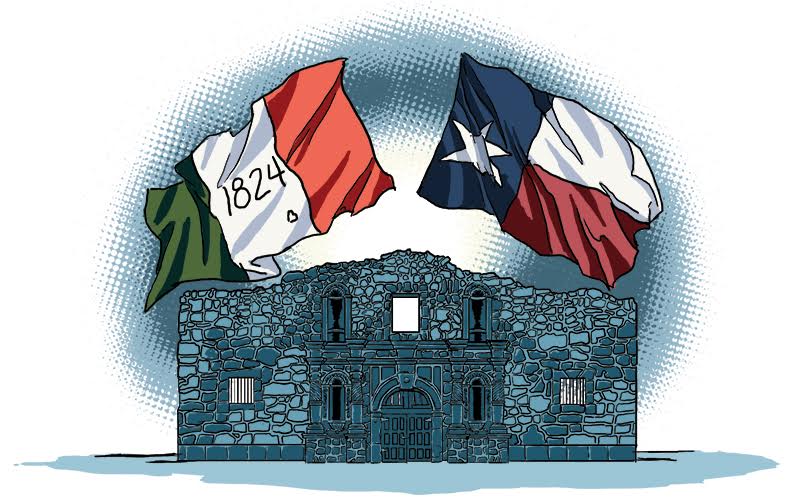The Alamo was originally built in 1744 by Spanish missionaries as the Mission San Antonio de Valero for St. Anthony of Padua.
The mission was intended to be a center for the conversion and education of Native Americans. The building was used as a mission for around fifty years until it was eventually abandoned in 1793. Then the building was made into a fortress for the Second Flying Company of San Carlos de Parras. It was this group that most likely gave it the name of El Alamo, Spanish for cottonwood, after their hometown of Alamo de Parras in Mexico. In 1835 the fort was surrendered to the Texian Army by General Martin Perfecto de Cos, though by March of that next year the Mexican Army attacked, wiping out virtually everyone at the fort in one of the bloodiest battles in the Texas War for Independence.
Some of the most famous figures in the history of the United States of America met their end during the Battle of the Alamo, including legendary frontiersman and US Congressman Davy Crockett. Also among the dead was pioneer and storied knife fighter James Bowie, whom the famed Bowie Knife is named after, the blade of choice for many Americans.
Eye witness reports are rather mixed, but it is estimated that anywhere between 1,800 and 6,000 Mexican soldiers bore down on the Texians, who numbers ranged from 185 to 300 souls. The troops at the Alamo gave put up an awesome fight though, taking somewhere between 600 and 1,800 Mexicans with them. Nearly all of those defending the fort were killed with only a handful of survivors, including Susannah Dickinson and her daughter Angelina, an infant at the time of the attack. Susannah, the wife of Captain Almaron Dickinson, was later sent to the Texian camp in Gonzalez with a warning for their commander, Sam Houston, that the same fate would befall all Texians who continued their revolution against Santa Anna and the Mexican government.
After the fighting, Mexican forces occupied the Alamo from March to May 1836. When they left the Alamo, the Mexican Troops were ordered to demolish the fortifications as they withdrew.
On April 21st of that same year, Sam Houston’s forces defeated Santa Anna and his men at the Battle of San Jacinto, capturing the enemy general, and ensuring Texas independence.
Just 10 years after Texas gained independence from the Mexican government it was annexed by the United States. U.S. troops would later revive “Remember the Alamo!” as their battle cry when fighting Santa Anna’s forces during the Mexican-American War. The U.S. Army would use the Alamo as a place to station troops and store supplies. During the Civil War, Texas was part of the Confederacy and the Alamo complex was occupied by the Confederate Army. After the Confederate defeat at the end of the war the US Army once again held the fort, though the Catholic Church did request that the Army relinquish the property so it could become a place of worship for Texas German Catholics. The Texas German Catholics gave up on that after the U.S. Military refused the request. The Army later abandoned the Alamo after Fort Sam Houston was established in San Antonio.
Between 1876 and 1883 the Catholic Church maintained the property and worked with the city to advertise the famous site as a tourist attraction. The convent portion of the Alamo complex was sold off and changed hands numerous times between various local merchants. The main chapel was eventually sold to the State of Texas in 1883. In 1905, management of the property was given to The Daughters of the Republic of Texas, who helped restore the grounds to what they are now.
Currently (as of 2011) the Alamo is managed by the General Land Office; it takes up 4.2 acres in the heart of San Antonio, receiving roughly 2.5 million visitors every year.

